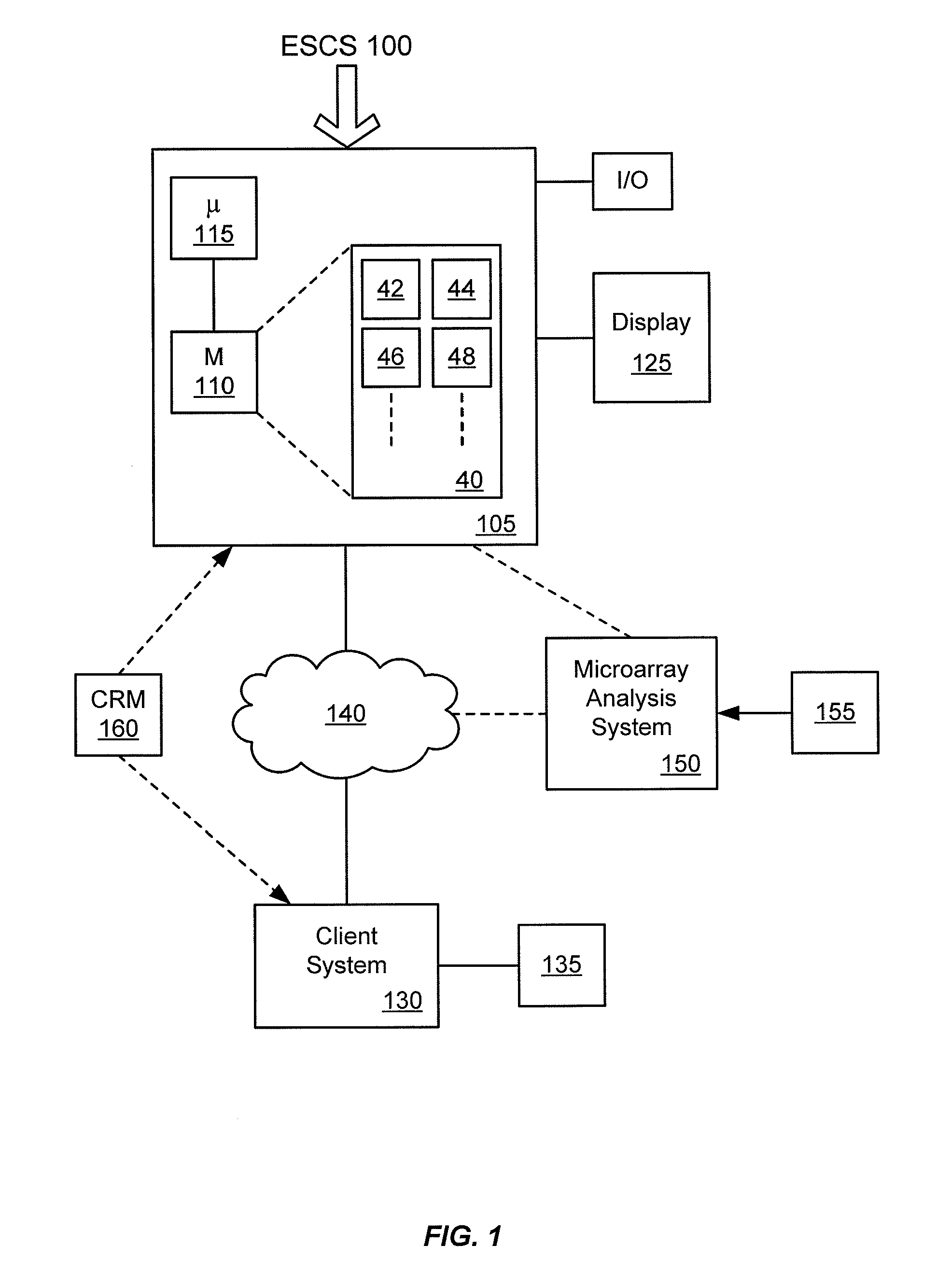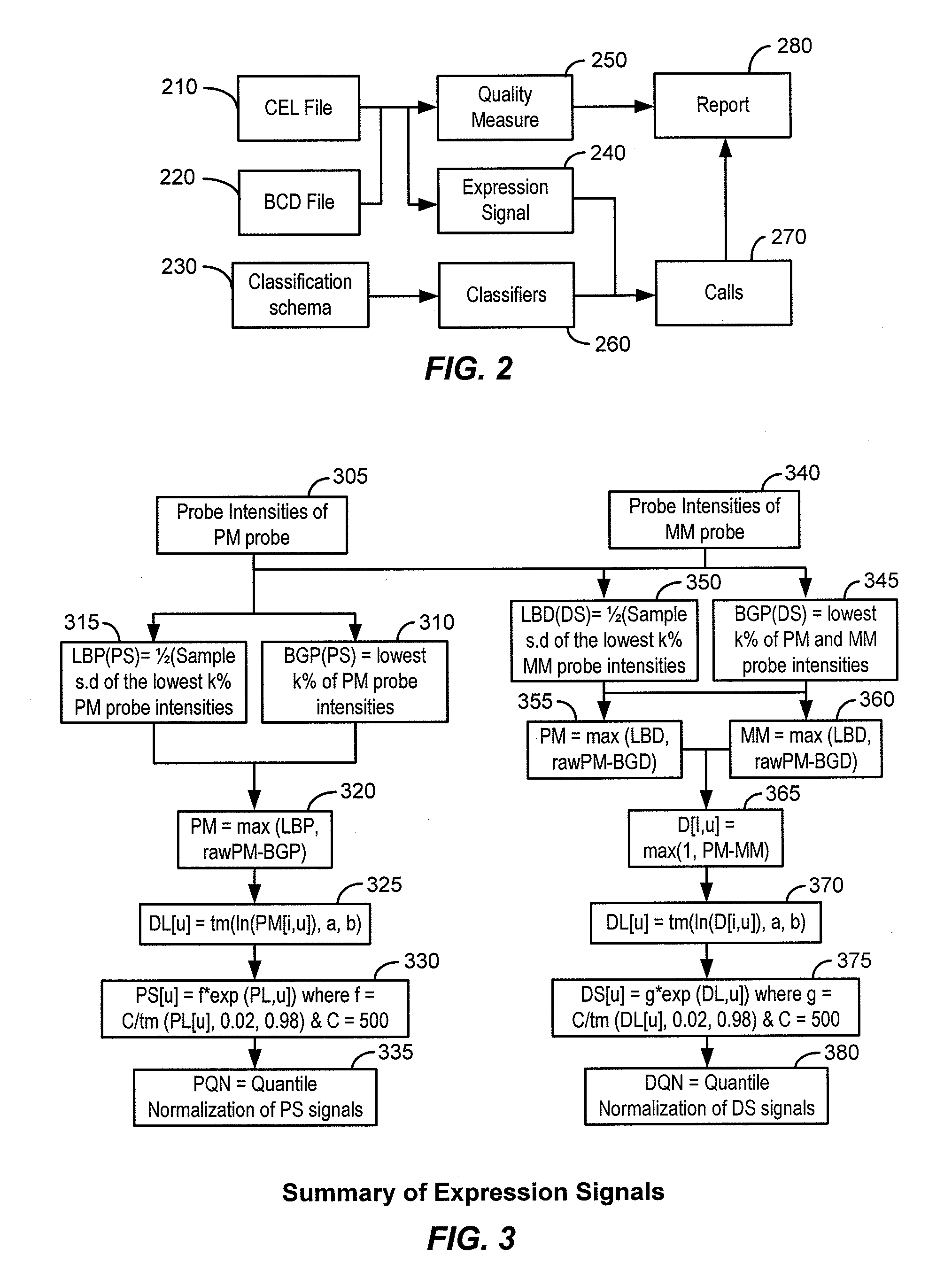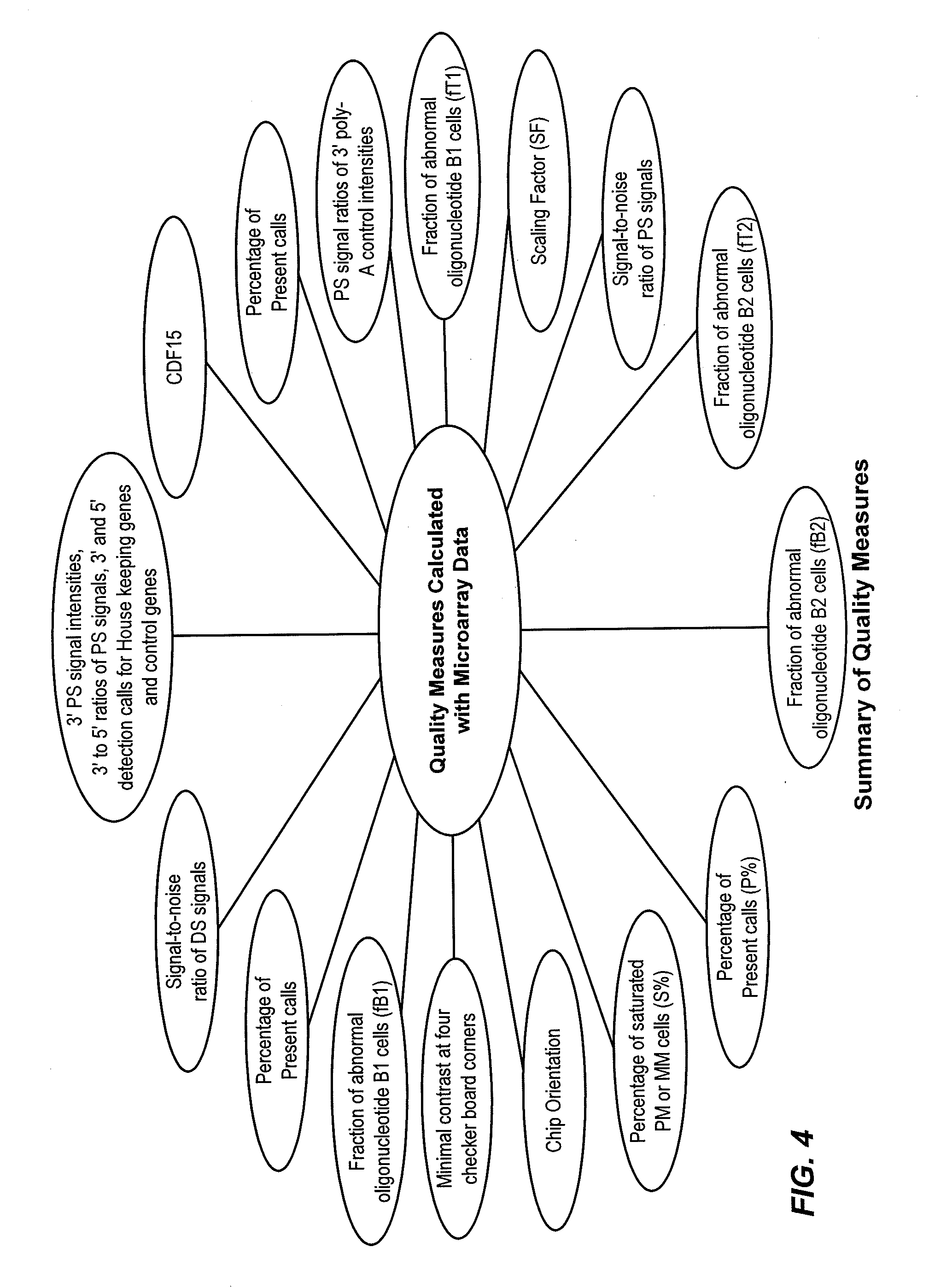Algorithms for classification of disease subtypes and for prognosis with gene expression profiling
a gene expression and classification algorithm technology, applied in the field of analysis of data generated by expression arrays, can solve the problems of wasting time that could otherwise be used for applying a more effective treatment and wasting methods
- Summary
- Abstract
- Description
- Claims
- Application Information
AI Technical Summary
Benefits of technology
Problems solved by technology
Method used
Image
Examples
Embodiment Construction
General Overview
[0022]The present invention provides systems and methods for classifying target molecules based on expression profiles obtained from expression arrays. In certain embodiments, the systems and methods are particularly useful for classifying Leukemia and other diseases.
[0023]“A target molecule” refers to a biological molecule of interest. The biological molecule of interest can be a ligand, receptor, peptide, nucleic acid (oligonucleotide or polynucleotide of RNA or DNA), or any other biological molecule. For example, if transcripts of genes are the interest of an experiment, the target molecules would be the transcripts. Other examples include protein fragments, small molecules, etc. “Target nucleic acid” refers to a nucleic acid (often derived from a biological sample) of interest. Frequently, a target molecule is detected using one or more probes. As used herein, a “probe” is a molecule for detecting a target molecule. It can be any of the molecules in the same clas...
PUM
 Login to View More
Login to View More Abstract
Description
Claims
Application Information
 Login to View More
Login to View More - R&D
- Intellectual Property
- Life Sciences
- Materials
- Tech Scout
- Unparalleled Data Quality
- Higher Quality Content
- 60% Fewer Hallucinations
Browse by: Latest US Patents, China's latest patents, Technical Efficacy Thesaurus, Application Domain, Technology Topic, Popular Technical Reports.
© 2025 PatSnap. All rights reserved.Legal|Privacy policy|Modern Slavery Act Transparency Statement|Sitemap|About US| Contact US: help@patsnap.com



